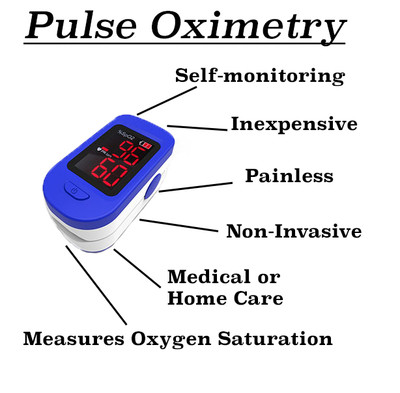 10th Nov 2021
10th Nov 2021
The Many Uses of Pulse Oximetry
As a non-invasive, painless, easy to administer, and inexpensive device for measuring the oxygen saturation of one’s blood, pulse oximetry has become a safety tool for a variety of individuals in settings outside standard medical uses. These include use by pilots operating in non-pressurized cabins, outdoor enthusiasts engaged in high elevation mountaineering activities, therapy patients being monitored for tolerance to rehabilitative exercises, athletes with high oxygen demands inherent in their sport, and other recreational or job specific activities where assessment of blood oxygen saturation levels would be beneficial.
However, pulse oximetry is the standard for monitoring blood oxygen saturation levels in intra-operative anesthesia patients as well as those in emergency rooms, hospital wards, medical clinics, and ambulances with respiratory difficulties such as chronic obstructive pulmonary disease, pneumonia, asthma, lung cancer, and COVID, and cardiac events such as angina, heart attack, and heart failure.
The ability to continuously monitor a patient’s oxygen saturation can detect hypoxic conditions before they reach levels associated with bad outcomes. Continuous monitoring is a superior assessment to point-in-time spot checks as breathing and breathing patterns and oxygenation are very dynamic, can change rapidly, and may result in a delayed hypoxic alert and associated medical intervention.
Fortunately, sensitive monitoring stations at medical facilities eliminate he need for continuous personnel monitoring of the patient’s values by sounding an alarm if a critical value is reached, accompanied by immediate patient care provider phone or pager notification. Further, some of the more sophisticated pulse oximeters can also assess methemoglobin and carboxyhemoglobin levels, and total hemoglobin.
Specific Medical Purposes for Which Pulse Oximetry May be Used
- As a triage tool for healthcare workers to assess patients with respiratory or cardiac conditions in emergency rooms or other medical settings awaiting treatment.
- For physical therapists to assess a patient’s response to increased exercise as part of a rehabilitative intervention.
- To allow healthcare workers to monitor the respiratory effects of medications and make individualized adjustments as indicated.
- For patients at home with chronic respiratory conditions to monitor saturation levels and make medication and oxygen flow rate adjustments specific to their circumstances and response variables, and to detect early silent hypoxia.
- For healthcare workers to determine the effectiveness of a patient’s ventilator treatment.
- To determine the effectiveness of a patient’s supplemental oxygen regimen.
- To assess the frequency and extent of breathing cessation in sleep apnea patients.
With such a wide scope of use, the ability to spot check or continuously monitor a person’s oxygen saturation levels is an extremely effective tool in patient care and self-monitoring.
References:
https://pubmed.ncbi.nlm.nih.gov/29262014/
https://www.hopkinsmedicine.org/health/treatment-tests-and-therapies/pulse-oximetry
Lynn Perkes is a full-time faculty member at Brigham Young University-Idaho teaching courses in Kinesiology and Biomechanics, Applied Kinesiology and Assessment, Therapeutic Exercise, and other Physical Therapist Assistant classes. He writes part-time for ProhealthcareProducts.com, who sells healthcare, medical, therapy, fitness, and personal protective equipment and supplies.





